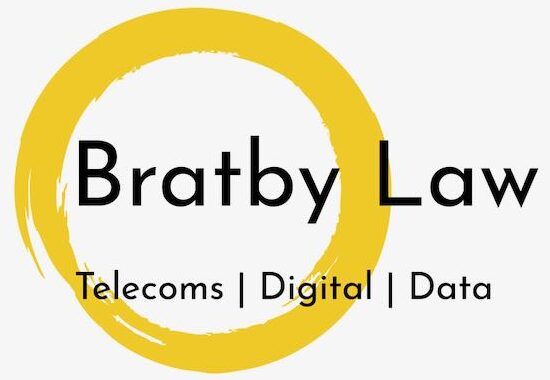Before Christmas, this blog flagged that last-mile fibre access (also know as next generation access, or NGA) was a commercial and regulatory issue that would be high on the agenda over the coming years. On Friday, BT announced its draft pricing and product proposals for ‘passive access’ to its ducts and poles in the UK. (In the NGA world passive access is used to describe access to physical infrastructure, whereas active access means access to some form of wholesale service).
BT is careful to position the new draft product proposals as complementary to its existing (active) Generic Ethernet Access products which it ‘expects … will form the basis of most [of BT’s competitors’ offerings]’. However, BT’s competitors may of course have a different view. In reality, the impact and usage of BT’s new products will depend on their pricing, both in absolute terms as well as relative to active products and the underlying technology used by its competitors.
In terms of pricing, BT is proposing that duct access will start from £0.95 per metre per year, with various additional charges for ancillary services, whilst pole sharing access will be around £21 per pole, per year. In BT’s view the duct access is around 15% less than international comparables, although I haven’t seen any underlying analysis to support that contention. Going beneath BT’s headline figures, the list of ancillary services is extensive and it looks like the level of the charges will be material for most purchasers, so the detail is well worth looking at.
So far as the regulatory background is concerned, the position is somewhat complex, with regulators in Europe and the UK both having taken an interest and the waters muddied even further by the interplay between traditional electronic communications regulation of markets in which players hold significant market power and BT’s Enterprise Act undertakings. Regulation in the UK is of course subject to EU thinking, in particular the Commission’s recommendation on NGA which takes into account views of the European Regulators’ Group (BEREC) .
The Commission’s recommendation makes clear in outline that the regulatory requirements on BT in relation to ducts and poles should include:
- duct access on an equivalent basis (para 13 of Recommendation);
- cost-orientated pricing for access to existing civil engineering infrastructure (para 14);
- mandated reference offer (para 15);
- requirement to install capacity for other operators when undertaking future civil engineering works (para 16); and
- provision of information to a central database (para 17).
Some of this was picked up by Ofcom in its October 2010 Review of the Wholesale Local Access Market, where following a finding that BT had significant market power in the UK (except Hull) in the market for wholesale local access services (being those based on copper loops, cable networks and optical fibre at a fixed location), it imposed a range of remedies relating to local loop unbundling (LLU), sub-loop unbundling (SLU), virtual unbundled local access (VULA) and physical infrastructure access (PIA) – with the last relating to ducts and poles.
The obligations imposed on BT pursuant to that market review specifically relating to PIA (i.e. ducts and poles) are to:
- produce a draft reference offer by mid-January (i.e. the latest announcement) – although this need not support leased line services at this stage;
- launch the product by the ‘middle’ of the year (which translated from Ofcom-speak, I would take to mean that BT need to have something in play by September);
- pricing should be cost-orientated (which means argument is likely);
- provide network access, to not discriminate unduly, to keep separate accounts and to publish certain information.
Although not referenced in Ofcom’s market review, the various requirements under BT’s undertakings in relation to NGA and equivalence are also relevant (although, Ofcom has expressly decided to not implement a para 13 equivalence requirement), as is Ofcom’s separate consideration of industry-wide mandation of infrastructure sharing. As can be seen, last week’s announcement is the start of a process that will play out over the rest of this year (and beyond). Challenge at this stage is unlikely, but the experience of the launch of almost any new product (interconnection in 1984, LLU in 2000) suggests that disputes may well be on the horizon.

Is it the case that sharing can only be mandated for local access services and not for something like business leased lines ? I guess BT could offer the latter but could take a position that the duct & pole sharing offer is only applicable for the use of services where BT has SMP and hence can be pushed into sharing.
Phil
The way the regulatory system works is that where possible regulation is targeted at wholesale inputs – in this case either passive or active access. As a general principle, competing communications providers are free to use wholesale inputs as inputs to whatever retail products they choose. However, in this case Ofcom have somewhat tied themselves up in knots as they considered telephony and broadband access under the wholesale local access review, but leased lines under the separate business connectivity market review. As a result of not doing the two reviews at the same time Ofcom (see paras 7.54 to 7.65 of the review) decided not to mandate PIA for uses other than access networks for broadband and telephony (and sub-loop unbundling) that review, but expressly excluding leased lines. This will however be reviewed in the next business connectivity market review, scheduled for the first part of this year – currently BT does have SMP in that market as well. (As an aside, Ofcom have also excluded fixed and mobile backhaul, and networks used to serve businesses and the public sector, as permitted uses).
It does lead to the rather absurd position that to implement, Ofcom will mandate BT to provide the inputs (which they have power to do), but then need to politely request BT to restrict others’ usage through ancillary contractual restrictions.
Hope that shed some light.
Rob